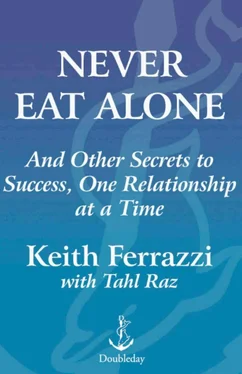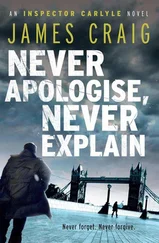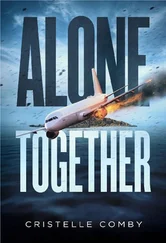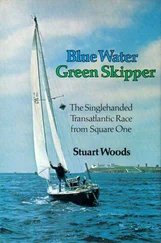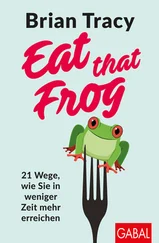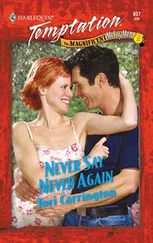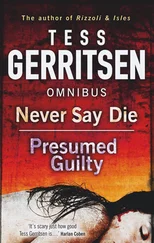Keith Ferrazzi - Never Eat Alone
Здесь есть возможность читать онлайн «Keith Ferrazzi - Never Eat Alone» весь текст электронной книги совершенно бесплатно (целиком полную версию без сокращений). В некоторых случаях можно слушать аудио, скачать через торрент в формате fb2 и присутствует краткое содержание. Год выпуска: 2005, ISBN: 2005, Издательство: C U R R E N C Y • D O U B L E D A Y, Жанр: marketing, на английском языке. Описание произведения, (предисловие) а так же отзывы посетителей доступны на портале библиотеки ЛибКат.
- Название:Never Eat Alone
- Автор:
- Издательство:C U R R E N C Y • D O U B L E D A Y
- Жанр:
- Год:2005
- ISBN:0-385-51529-4
- Рейтинг книги:4 / 5. Голосов: 1
-
Избранное:Добавить в избранное
- Отзывы:
-
Ваша оценка:
- 80
- 1
- 2
- 3
- 4
- 5
Never Eat Alone: краткое содержание, описание и аннотация
Предлагаем к чтению аннотацию, описание, краткое содержание или предисловие (зависит от того, что написал сам автор книги «Never Eat Alone»). Если вы не нашли необходимую информацию о книге — напишите в комментариях, мы постараемся отыскать её.
Never Eat Alone — читать онлайн бесплатно полную книгу (весь текст) целиком
Ниже представлен текст книги, разбитый по страницам. Система сохранения места последней прочитанной страницы, позволяет с удобством читать онлайн бесплатно книгу «Never Eat Alone», без необходимости каждый раз заново искать на чём Вы остановились. Поставьте закладку, и сможете в любой момент перейти на страницу, на которой закончили чтение.
Интервал:
Закладка:
Give yourself between twelve and twenty-four hours after you meet someone to follow up. If you meet somebody on a plane, send them an e-mail later that day. If you meet somebody over cocktails, again, send them an e-mail the next morning. For random encounters and chance meetings, e-mail is a fine tool for dropping a quick note to say, "It was a pleasure meeting you. We must keep in touch." In such an e-mail, I like to cite something particular we talked about in the course of our conversation— whether a shared hobby or business interest—that serves as a mental reminder of who I am. When I leave the meeting, I put the name and e-mail address of the new acquaintance in my database and program my PDA or BlackBerry to remind me in a month's time to drop the person another e-mail, just to keep in touch.
Why go to all the trouble of meeting new people if you're not going to work on making them a part of your life?
In the aftermath of a business meeting, I've taken to doing something my classmate at HBS and former COO James Clark swears by. In his follow-up, he always reiterates the commitments everyone has made, and asks when a second follow-up meeting can be arranged.
When the other person has agreed to do something, whether it's meeting for coffee next time you're in town or signing a major deal, try to get it in writing. It's shouldn't be formulaic or ironclad, just something such as "It was great talking to you over lunch yesterday. I wanted to follow up with some thoughts we discussed yesterday. I believe FerrazziGreenlight can serve the interests of your company, and I've had time to work out the finer details. The next time I'm in town, I'd love to get on your calendar and chat for five or ten minutes."
Nine times out of ten, the person will casually write back accepting your offer to meet again. Then, when the time comes to take that person up on his offer to talk again, you can call him with the force of his e-mail commitment "in writing" behind you. He's already agreed to meet. Now the question is when, and your persistence will assure that happens at some point.
But remember—and this is critical—don't remind them of what they can do for you, but focus on what you might be able to do for them. It's about giving them a reason to want to follow up.
Another effective way to follow up is to clip relevant articles and send them to the people in your network who might be interested. When people do this for me, I'm tremendously appreciative; it shows they're thinking about me and the issues I'm facing.
While e-mail is one perfectly acceptable way to follow up, there are other methods to consider. A handwritten thank-you note these days can particularly capture a person's attention. When's the last time you received a handwritten letter? When you get something addressed to you personally, you open it.
The thank-you note is an opportunity to reinforce a perception of continuity in a relationship and create an aura of goodwill. Mention any pertinent information you failed to bring up in your meeting. Emphasize both your desire to meet again and your offer to help.
Here are a few more reminders of what to include in your follow-ups:
• Always express your gratitude.
• Be sure to include an item of interest from your meeting or conversation—a joke or a shared moment of humor.
• Reaffirm whatever commitments you both made—going both ways.
• Be brief and to the point.
• Always address the thank-you note to the person by name.
• Use e-mail and snail mail. The combination adds a personalized touch.
• Timeliness is key. Send them as soon as possible after the meeting or interview.
• Many people wait until the holidays to say thank you or reach out. Why wait? Your follow-ups will be timelier, more appropriate, and certainly better remembered.
• Don't forget to follow up with those who have acted as the gobetween for you and someone else. Let the original referrer know how the conversation went, and express your appreciation for their help.
Make follow-up a habit. Make it automatic. When you do, the days of struggling to remember people's names—and of other people struggling to remember yours—will be a thing of the past.
14. Be a Conference Commando
Military strategists know that most battles are won before the first shot is fired by the side that determines where, when, and how an engagement is fought. And so it is with most successful conferences. Turning a conference into your own turf and setting goals ahead of time is what turns a casual conference attendance into a mission.
Don't just be an attendee; be a conference commando! Conferences are good for mainly one thing. No, it's not the coffee and cookies at breaks. It's not even pricey business enlightenment. They provide a forum to meet the kind of like-minded people who can help you fulfill your mission and goals. Before deciding to attend a conference, I sometimes informally go so far as using a simple return-on-investment-type thought process. Is the likely return I'll get from the relationships I establish and build equal to or greater than the price of the conference and the time I spend there? If so, I attend. If not, I don't. It's that simple. That may seem like an awfully pragmatic view of conferences, but it works.
Right after we sold YaYa, the new owners instituted a set of cost-cutting policies relative to travel and conferences. I thought the policies were fundamentally off the mark.
The owners saw conferences as boondoggles—pleasant affairs for indulgent executives rather than as revenue generators. To our new parent company, the costs of sending people to a few events each year seemed like an unnecessary expense on a start-up company's balance sheet.
I strongly disagreed and promised to convince them otherwise. I set about recording the actual number of revenue-generating projects that came directly from people I had met at conferences. The owners were stunned when I presented a spreadsheet showing successive deals and how a significant chunk of revenue could be traced back to one conference or another.
Their ill-tempered disposition toward these business gettogethers—and these executives are far from alone in holding such attitudes—stems from an all-too-common misperception that conferences are places to find insight. Wrong. Real, actionable insight mostly comes from experience, books, and other people. Roundtable discussions and keynote speeches can be fun, even inspirational, but rarely is there the time to impart true knowledge.
But there may be no better place to extend your professional network and, on occasion, get deals done. Let me give you an example based on sales. In the old model of selling, 80 percent of a salesperson's time went into setting up meetings, giving a presentation, and trying to close a deal. The other 20 percent was spent developing a relationship with the customer. Today, we focus mostly on relationship selling. Smart salespeople—in fact, smart employees and business owners of all stripes—spend 80 percent of their time building strong relationships with the people they do business with. The slickest PowerPoint presentation can't compete with the development of real affection and trust in capturing the hearts and minds of other people.
Those who use conferences properly have a huge leg up at your average industry gathering. While others quietly sit taking notes, content to sip their free bottled water, these men and women are setting up one-on-one meetings, organizing dinners, and, in general, making each conference an opportunity to meet people who could change their lives.
If these people seem as if they aren't playing by the same rules as their fellow attendees, you're right. They've gone well beyond the traditional, warmed-over advice to Wear Your Badge, Warmly Greet Everyone, Establish Firm Eye Contact, and other common refrains that fail to distinguish them from the rest of the horde.
Читать дальшеИнтервал:
Закладка:
Похожие книги на «Never Eat Alone»
Представляем Вашему вниманию похожие книги на «Never Eat Alone» списком для выбора. Мы отобрали схожую по названию и смыслу литературу в надежде предоставить читателям больше вариантов отыскать новые, интересные, ещё непрочитанные произведения.
Обсуждение, отзывы о книге «Never Eat Alone» и просто собственные мнения читателей. Оставьте ваши комментарии, напишите, что Вы думаете о произведении, его смысле или главных героях. Укажите что конкретно понравилось, а что нет, и почему Вы так считаете.
